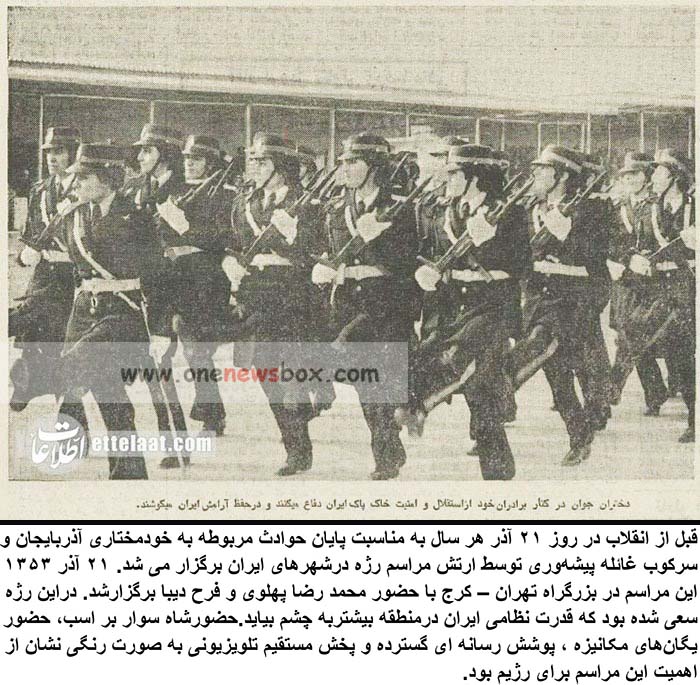In the years preceding the Iranian Revolution, the regime under Mohammad Reza Pahlavi sought to solidify its dominance, both domestically and regionally. One of the most significant annual events designed to project this power was the December 11 military parade, which was held every year to commemorate the suppression of the Azerbaijani autonomy movement and the artisanal rebellion, both of which had been pivotal moments in the early 20th century. This annual parade, organized by the Pahlavi government, was not just a military demonstration but also a highly symbolic event that reflected the Shah’s ambitions to portray Iran as a powerful and modernized nation. The parade held on December 11, 1974, was particularly significant as it was one of the last major displays of state-sponsored pomp and power before the revolution that would ultimately overthrow the monarchy.
The historical context of the December 11 parades cannot be fully understood without examining the events they were meant to commemorate. In the early 20th century, particularly in the years following World War I, Iran was in a state of political and social turmoil. Azerbaijan, a region rich in resources and strategically located, had long been a source of contention between local forces seeking greater autonomy and the central government, which sought to maintain a firm grip on power.

